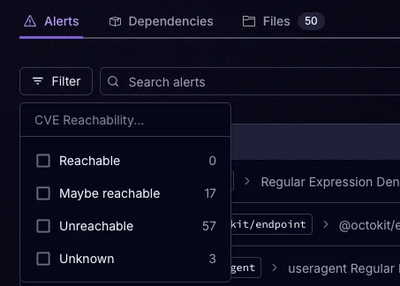
Product
Announcing Precomputed Reachability Analysis in Socket
Socket’s precomputed reachability slashes false positives by flagging up to 80% of vulnerabilities as irrelevant, with no setup and instant results.
GeoHash Algorithm first described by Gustavo Niemeyer in February 2008. By interleaving latitude and longitude information in a bitwise fashion, a composite value is generated that provides a high resolution geographic point, and is well suited for storage or transmission as a character string.
This is a basic demonstration of how the GeoHash algorithm can be used to generate bounding box searches without the use of specialized spatial indexing approaches.
This can be especially helpful in cases where spatial indexes are either not supported or do not scale to high volumes. Environments such as Google App Engine, EC2, and SQLite provide reasonable string indexing services but do not support spatial indexing. This algorithm could be used to provide proximity searching in these environments.
The Geohash algorithm was first described by Gustavo Niemeyer in February 2008. By interleaving latitude and longitude information in a bitwise fashion, a composite value is generated that provides a high resolution geographic point, and is well suited for storage or transmission as a character string.
Geohash also has the property that as the number of digits decreases (from the right), accuracy degrades. This property can be used to do bounding box searches, as points near to one another will share similar Geohash prefixes.
However, because a given point may appear at the edge of a given Geohash bounding box, it is necessary to generate a list of Geohash values in order to perform a true proximity search around a point. Because the Geohash algorithm uses a base-32 numbering system, it is possible to derive the Geohash values surrounding any other given Geohash value using a simple lookup table.
So, for example, 1600 Pennsylvania Avenue, Washington DC resolves to:
38.897, -77.036
Using the geohash algorithm, this latitude and longitude is converted to:
dqcjqcp84c6e
A simple bounding box around this point could be described by truncating this geohash to:
dqcjqc
However, 'dqcjqcp84c6e' is not centered inside 'dqcjqc', and searching within 'dqcjqc' may miss some desired targets.
So instead, we can use the mathematical properties of the Geohash to quickly calculate the neighbors of 'dqcjqc'; we find that they are:
'dqcjqf','dqcjqb','dqcjr1','dqcjq9','dqcjqd','dqcjr4','dqcjr0','dqcjq8'
This gives us a bounding box around 'dqcjqcp84c6e' roughly 2km x 1.5km and allows for a database search on just 9 keys:
SELECT * FROM table WHERE LEFT(geohash,6) IN ('dqcjqc', 'dqcjqf','dqcjqb','dqcjr1','dqcjq9','dqcjqd','dqcjr4','dqcjr0','dqcjq8');
GeoHash on Wikipedia GeoHash gem on Rubyforge
Please contact me at dave at roundhousetech.com with any questions you may have about this code; right now this is experimental. The bounding box code found here will be added to the Ruby gem soon.
To use this in a CommonJS capable system use the following code snippet to generate GeoHashes:
` var GeoHash = require("./geohash"); var hash = GeoHash.encodeGeoHash(38.897, -77.036); // lat, lng
`
Geohash Javascript Demonstration (c) 2008 David Troy Refactored to CommonJS module by Chris Williams (c) 2010 Released under the MIT License
FAQs
GeoHash Algorithm first described by Gustavo Niemeyer in February 2008. By interleaving latitude and longitude information in a bitwise fashion, a composite value is generated that provides a high resolution geographic point, and is well suited for storage or transmission as a character string.
The npm package geohash receives a total of 737 weekly downloads. As such, geohash popularity was classified as not popular.
We found that geohash demonstrated a healthy version release cadence and project activity because the last version was released less than a year ago. It has 0 open source maintainers collaborating on the project.
Did you know?

Socket for GitHub automatically highlights issues in each pull request and monitors the health of all your open source dependencies. Discover the contents of your packages and block harmful activity before you install or update your dependencies.

Product
Socket’s precomputed reachability slashes false positives by flagging up to 80% of vulnerabilities as irrelevant, with no setup and instant results.

Product
Socket is launching experimental protection for Chrome extensions, scanning for malware and risky permissions to prevent silent supply chain attacks.

Product
Add secure dependency scanning to Claude Desktop with Socket MCP, a one-click extension that keeps your coding conversations safe from malicious packages.